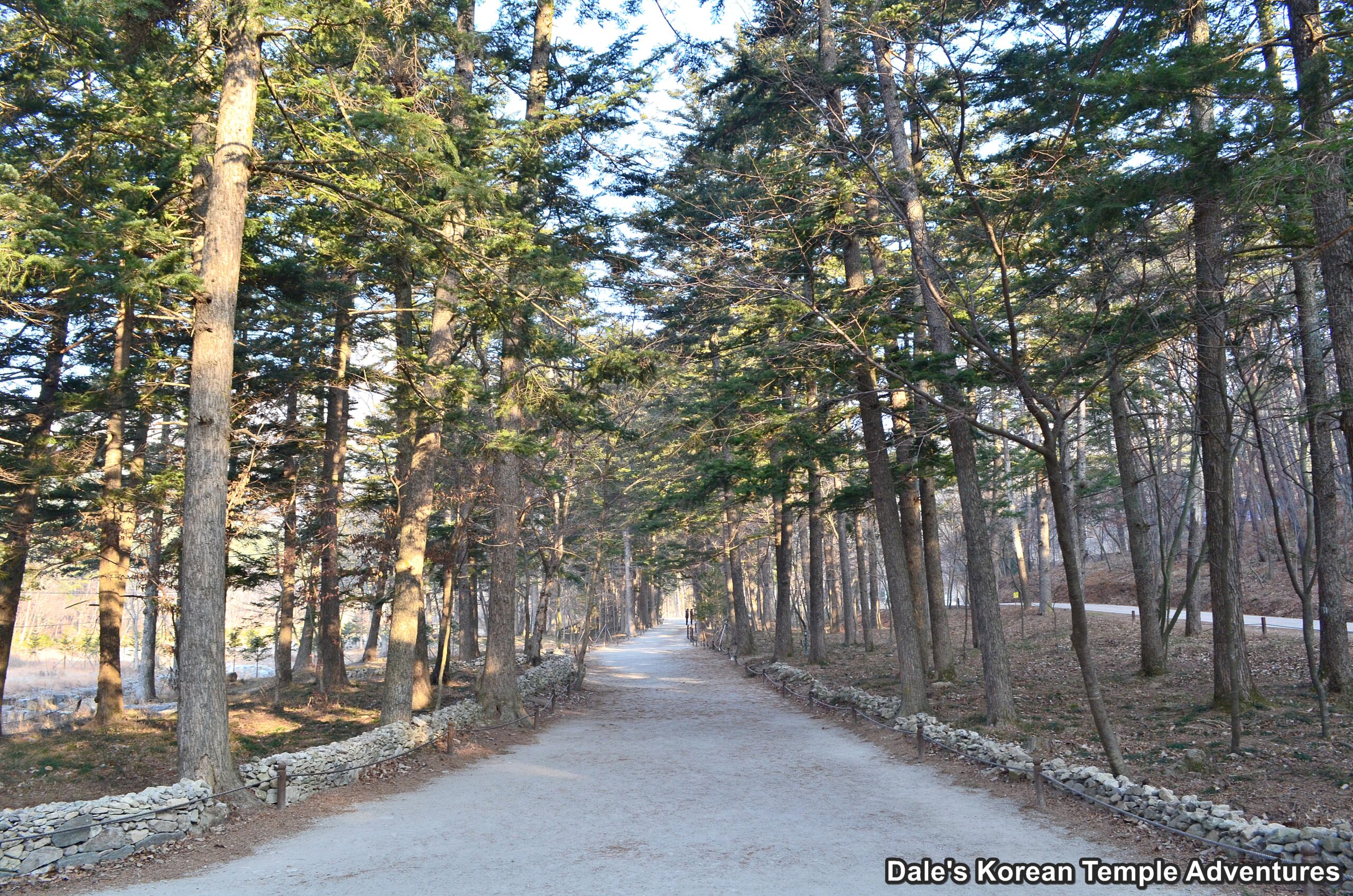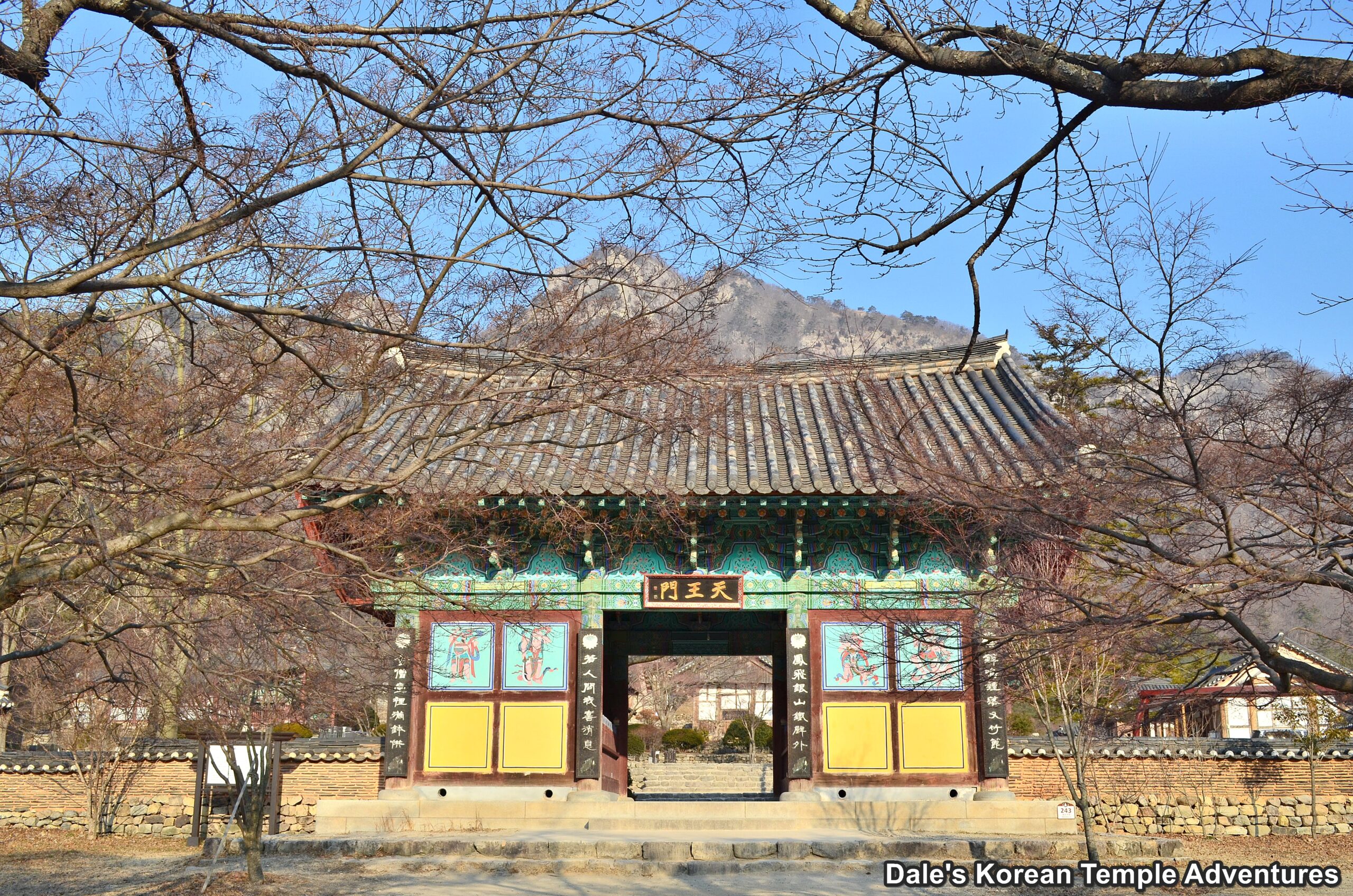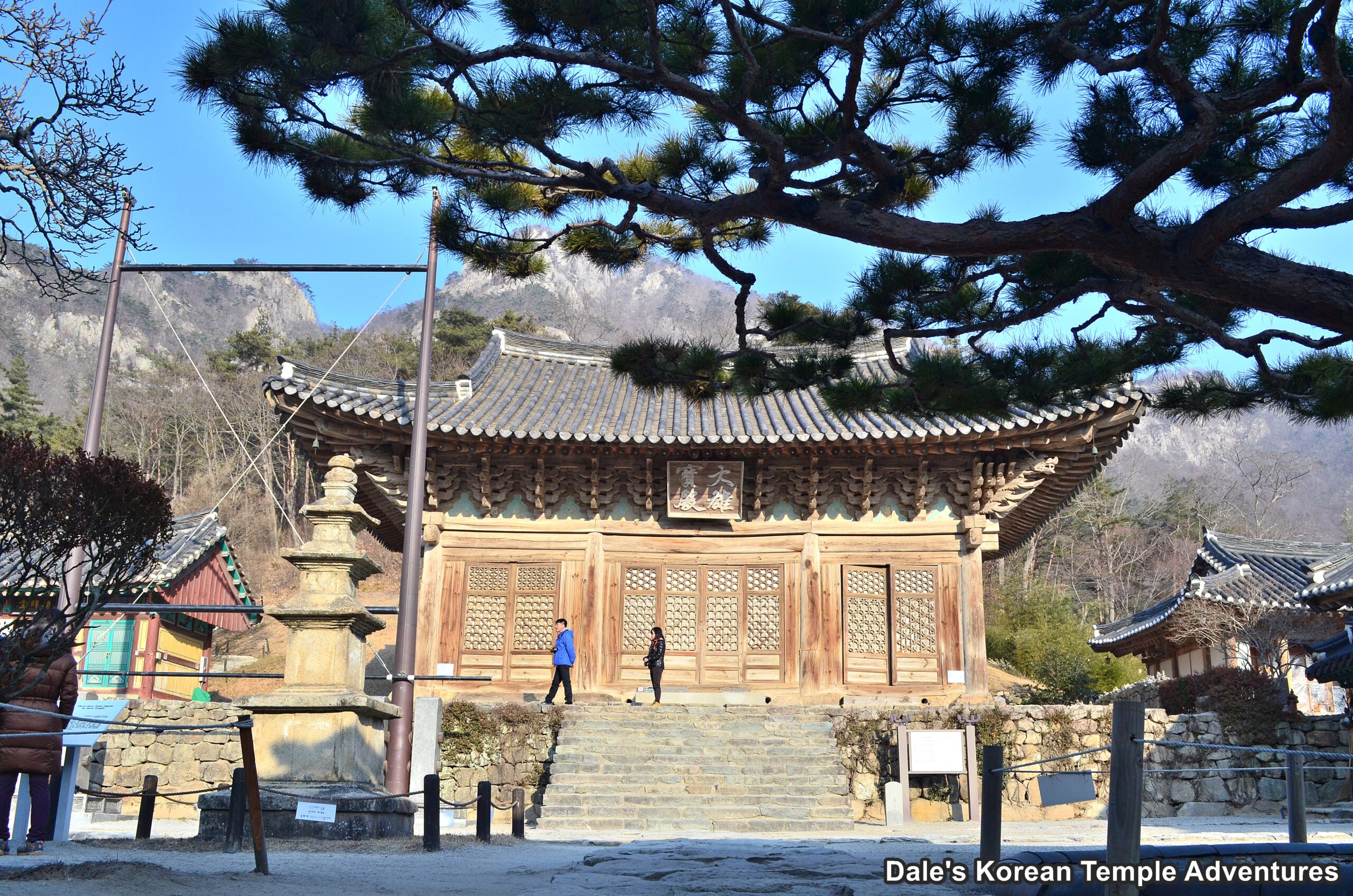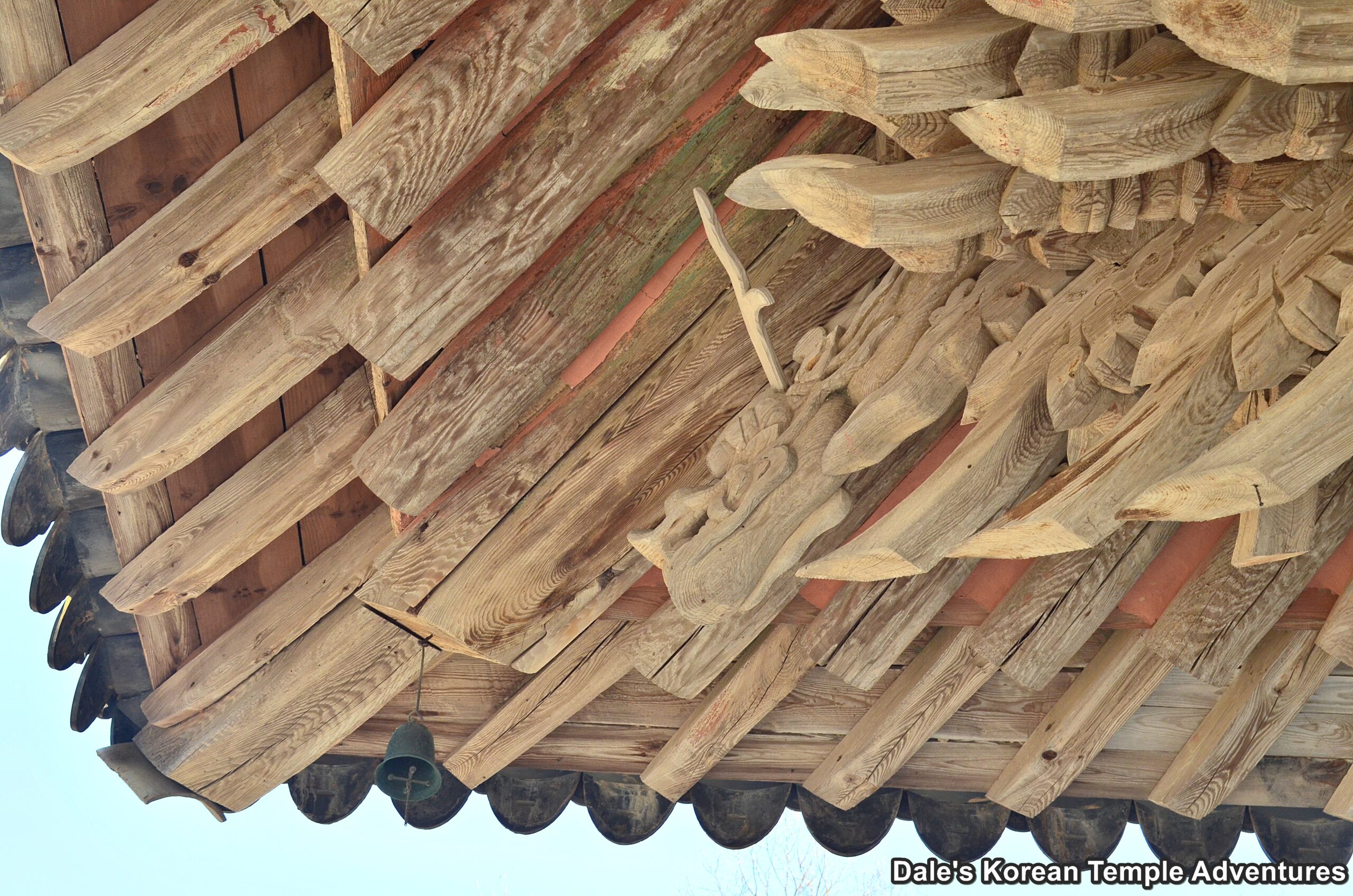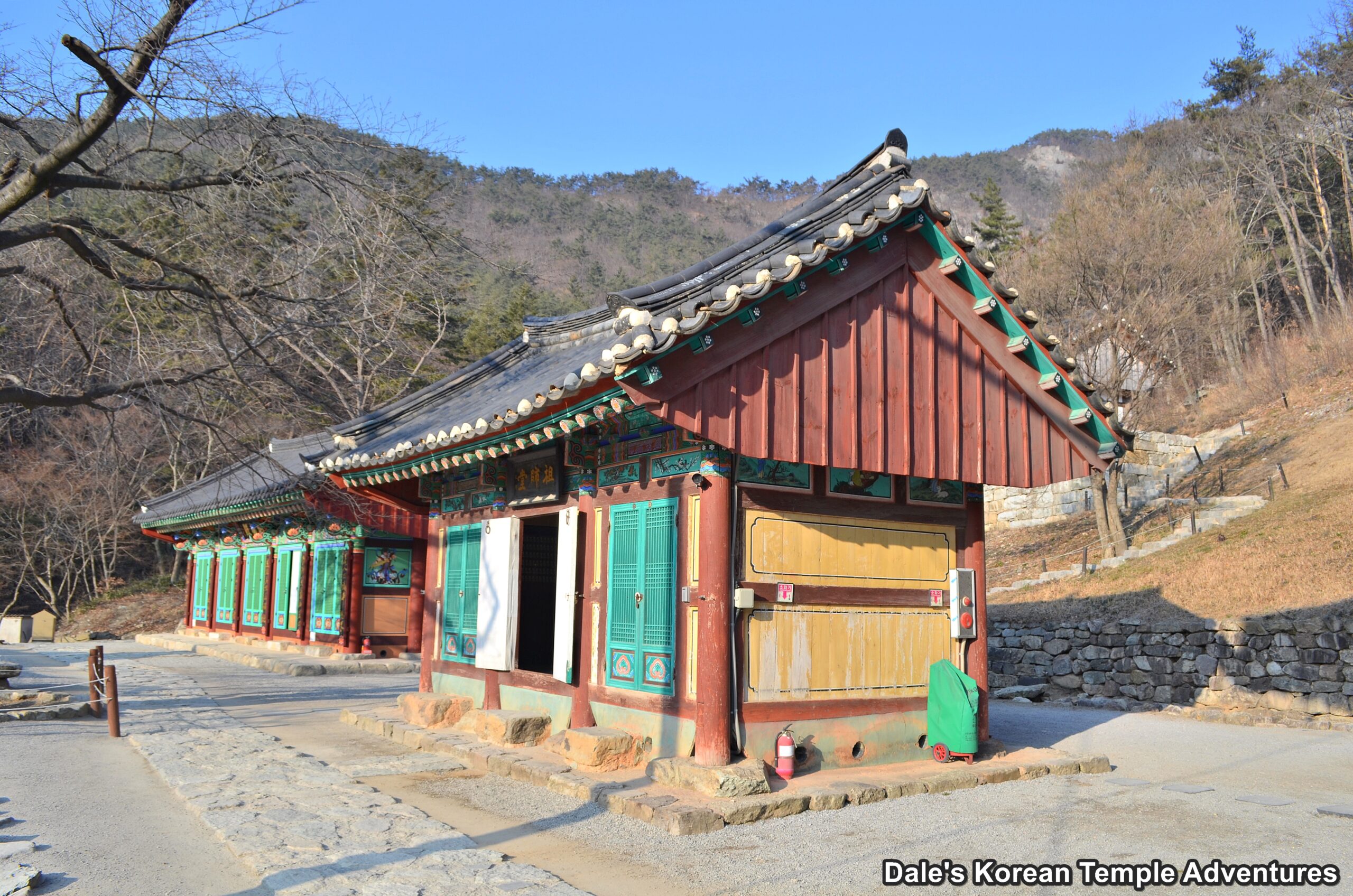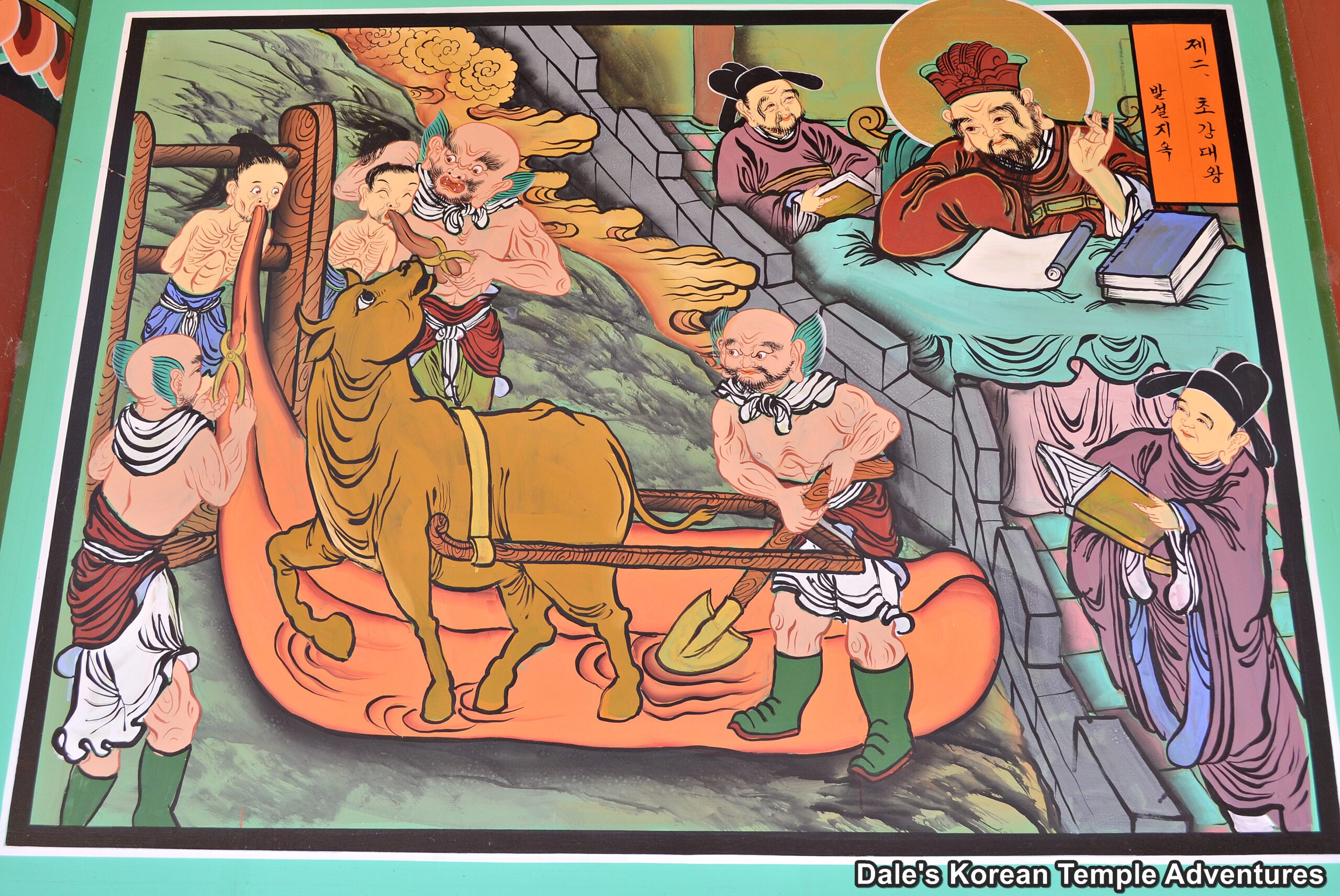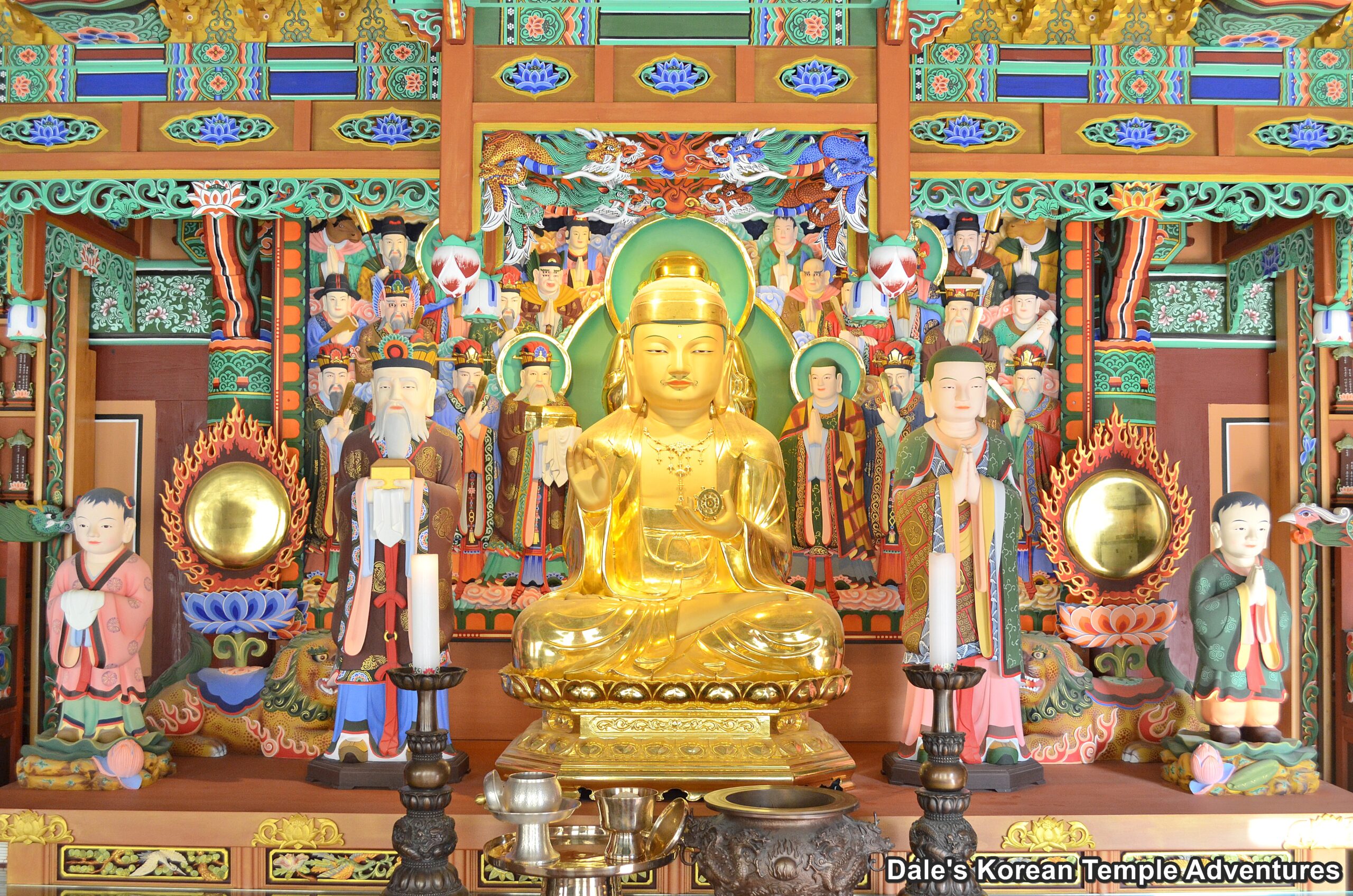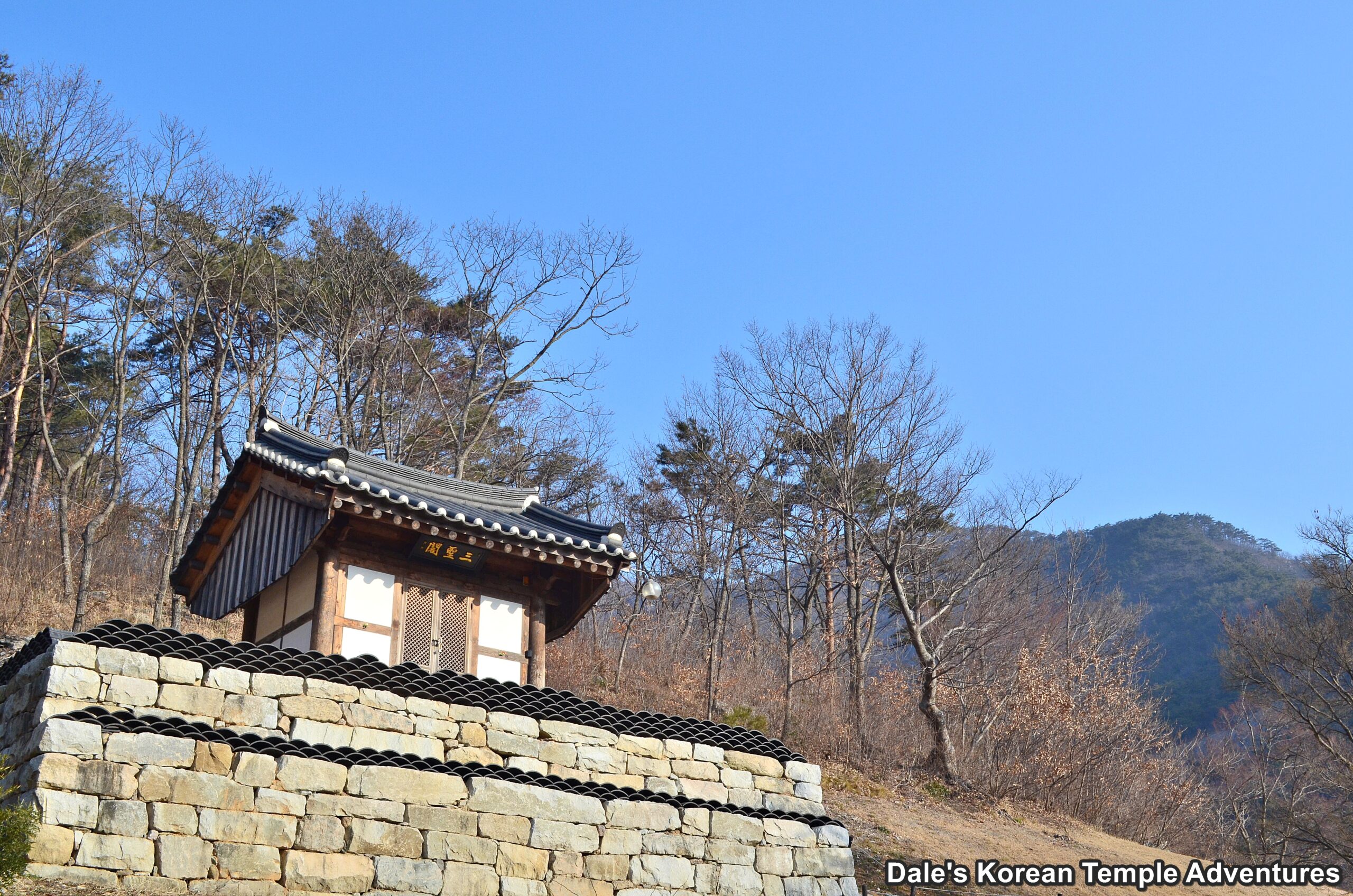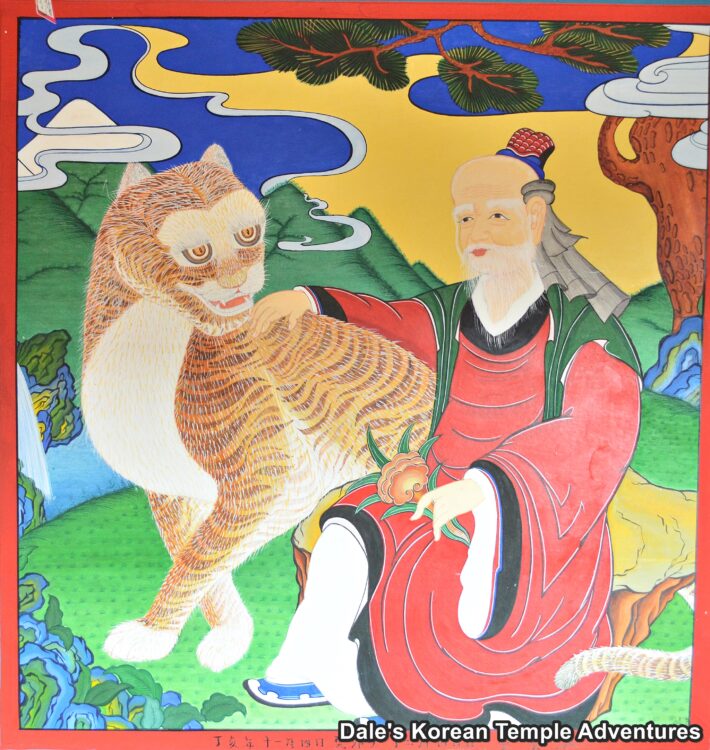Naesosa Temple – 내소사 (Buan, Jeollabuk-do)
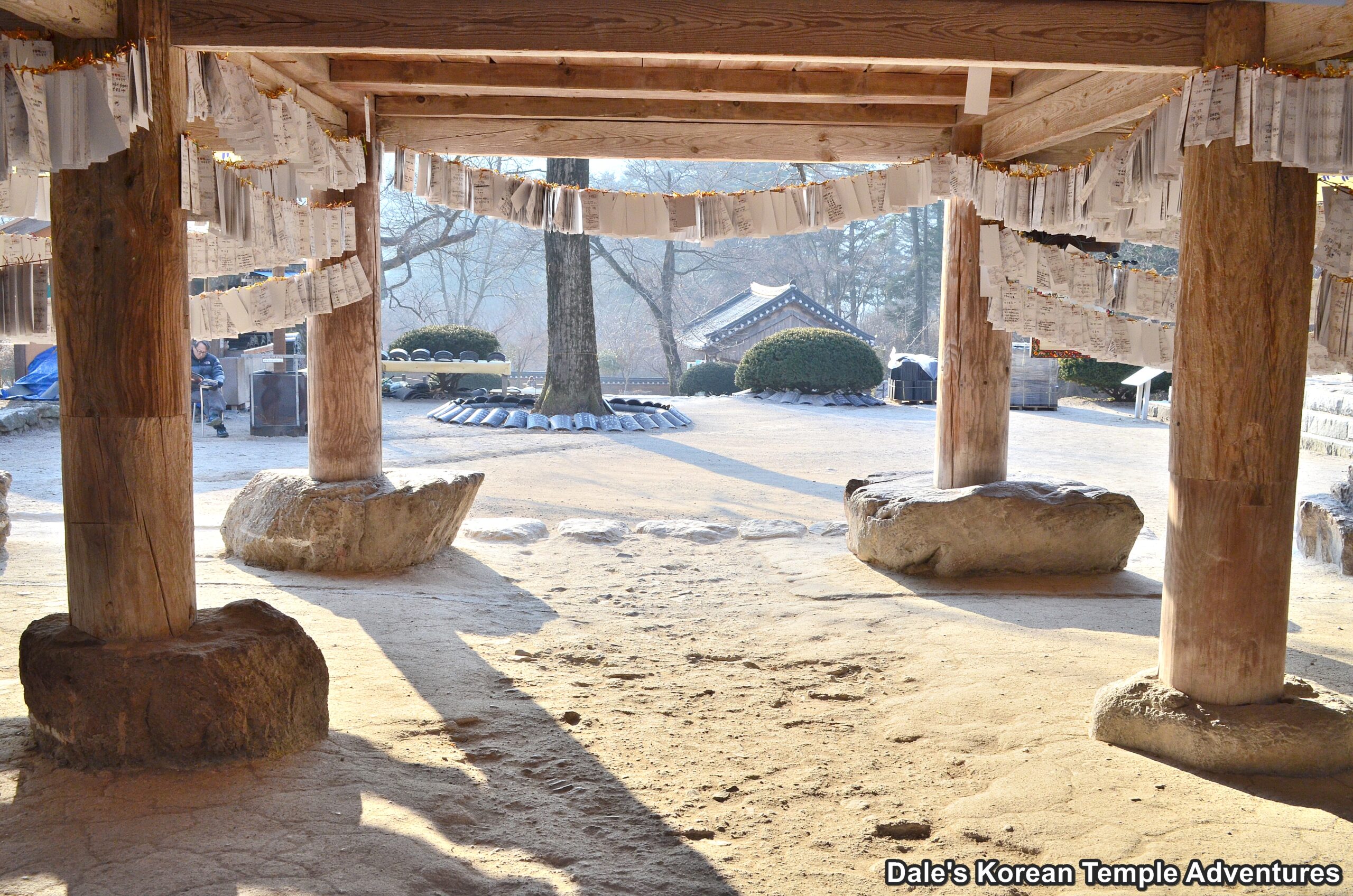
Temple History
Naesosa Temple, which means “Come Revive Temple,” in English, is located in Buan, Jeollabuk-do. Naesosa Temple is located just south of Gwaneum-bong (Gwanseeum-bosal Peak) in the southern part of Byeonsan Bando National Park. Naesosa Temple was first established in 633 A.D. by the monk Hyegu-duta in the Baekje Kingdom (18 B.C. – 660 A.D.). At that time, two temples were built. They were Daesoraesa Temple and Sosoraesa Temple. Daesoraesa Temple was later destroyed by fire, and all that remained of the two was Sosoraesa Temple.
There’s a story that states that So Jeong-bang, a general from the Tang Dynasty (618-907 A.D.) visited Naesosa Temple and served as a monk at the temple. However, there’s no record to prove this claim. Another story that pertains to Naesosa Temple states that the Lotus Sutra, or “묘법연화경 – Myobeop Yeonhwa-gyeong,” in Korean, was written by the wife whose family name was Lee for the deceased soul of her husband, Yu Geun. The Lotus Sutra was written by Lee in 1414. This document is also Korean Treasure #278.
Sosoraesa Temple was later rebuilt in 1633 by Master Cheongmin after all the temple buildings were destroyed during the Imjin War (1592-1598). It was also around this time that the temple was renamed Naesosa Temple. The name of the temple is in reference to all that enter the temple being blessed and having their wishes come true. The temple was later repaired in 1869.
Naesosa Temple is home to three Korean Treasures. It also takes part in the popular Temple Stay program with a variety of programs to enjoy.
Temple Layout
You first approach Naesosa Temple past the Iljumun Gate. There is a six hundred metre walk up to the Cheonwangmun Gate from the Iljumun Gate that’s beautifully lined with mature fir trees. Near the end of this walk, and just before the Cheongwangmun Gate, you’ll find a collection of beautiful cherry trees. The Cheonwangmun Gate houses four expressive statues of the Four Heavenly Kings inside it. And the expressiveness of these celestial figures are matched by the demonic expressions of the demons they are trampling underfoot.
On the other side of the Cheonwangmun Gate, you’ll be met by a one thousand year old tree. The base of this tree is used as a shrine for prayer. Just up the stairs, to the left and right, are two separate bell pavilions. The one to the right is the Jong-ru Pavilion, which houses the four traditional Buddhist percussion instruments. The bell pavilion to the left, on the other hand, houses a compact bell that dates all the way back to 1222. This 103 c.m. tall bronze bell was moved to Naesosa Temple in 1850 from Jeongnimsa Temple. The Bronze Bell of Naesosa Temple is also Korean Treasure #277. Amazingly, and despite its size, it still weighs an impressive 420 k.g!
Next, you’ll pass under the Boje-ru Pavilion to gain entry to the main temple courtyard at Naesosa Temple. Straight ahead of you stands the Daeungbo-jeon Hall at Naesosa Temple. The main hall at Naesosa Temple dates back to 1633. The entire Daeungbo-jeon Hall, rather remarkably, was built without using a single nail. Instead, it was built using wooden slats that connect the frame together. The exterior walls are a simple brown colour from centuries of wear. The front of the shrine hall is beautifully adorned with floral latticework. As for the interior, and seated on the main altar, is a triad of statues centred by Seokgamoni-bul (The Historical Buddha). This central image is joined on either side by Munsu-bosal (The Bodhisattva of Wisdom) and Bohyeon-bosal (The Bodhisattva of Power). To the right of the main altar hangs a colourful Shinjung Taenghwa (Guardian Mural). And to the left hangs a red mural dedicated to Jijang-bosal (The Bodhisattva of the Afterlife). While standing in the Daeungbo-jeon Hall, and if you look up at the ceiling, you’ll find it intricately painted and decorated with dragons and cranes. Behind the main altar, on the back side, you’ll find a mural entitled “Avalokitesvara Bodhisattva in White Robe.” This mural is dedicated to Gwanseeum-bosal (The Bodhisattva of Compassion), and it’s the largest of its kind still preserved in Korea. The Daeungbo-jeon Hall is also Korean Treasure #291.
In front of the Daeungbo-jeon Hall is a three-story stone pagoda that dates back to the Goryeo Dynasty (918-1392). And to the right of the main hall are the monks facilities and the dorms at the temple.
The remaining shrine halls at Naesosa Temple are situated to the left of the Daeungbo-jeon Hall. The first of the three is the Josa-jeon Hall. This shrine hall honours prominent monks that once called Naesosa Temple their home. The shrine hall to the left of the Josa-jeon Hall is the Myeongbu-jeon Hall. This newer-looking shrine hall is adorned with some gruesome murals dedicated to the Shiwang (The Ten Kings of the Underworld) around its exterior walls. As for the interior, you’ll find a golden capped, and green haired statue dedicated to Jijang-bosal (The Bodhisattva the Afterlife). This central statue is joined on both sides by vibrant statues of the Ten Kings of the Underworld.
Behind these shrine halls, and slightly up the embankment and a stone trail that winds its way up to it, is a rather plain-looking Samseong-gak Hall. Inside this shaman shrine hall are three folk-style murals dedicated to the three most popular shaman deities in Korean Buddhism: Chilseong (The Seven Stars), Sanshin (The Mountain Spirit), and Dokseong (The Lonely Saint). It’s also from this vantage point that you get a great view of the temple grounds and the towering mountains that surround it.
How To Get There
From the Buan Intercity Bus Terminal, you can take a direct bus to Naesosa Temple. The bus to Naesosa Temple will drop you off eight hundred metres outside the temple grounds. You’ll then need to make your way towards the temple grounds past all the stores and restaurants.
Overall Rating: 7/10
Naesosa Temple is beautifully situated in Byeonsan Bando National Park. Adding to all this natural beauty is the amazing Daeungbo-jeon main hall, the bronze bell from 1222, and the artwork housed on the exterior walls of the Myeongbu-jeon Hall and inside the Samseong-gak Hall.
